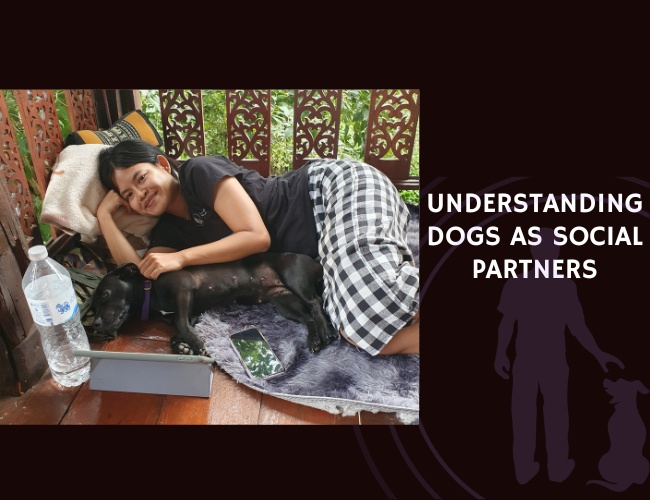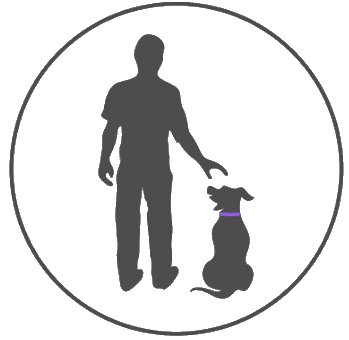Introduction: Moving Beyond Pack Theory
Historical Perspective on Pack Theory and Why It Needs Revision
For decades, the concept of pack theory has shaped our understanding of dogs’ social behavior. This theory, which originates from observations of wolf packs, posits that dogs, as descendants of wolves, also follow a strict hierarchical structure with dominant alpha individuals exerting control over submissive members. This framework has significantly influenced dog training practices, emphasizing dominance and submission.
However, recent studies and observations challenge the validity of applying wolf pack dynamics to domestic dogs. The differences between the two species call for a reconsideration of pack theory. For example, while wolves in the wild display some hierarchical behaviors, their social interactions are more nuanced and fluid than previously thought. Importantly, modern domesticated dogs have evolved alongside humans for thousands of years, resulting in unique social behaviors that deviate significantly from their wild ancestors.
Evidence Supporting More Complex Social Relationships in Dogs
Contemporary research supports the notion that dogs possess more complex social structures than the outdated pack theory suggests. For instance, studies have shown that dogs are highly cooperative animals, capable of forming strong, reciprocal, and dynamic relationships not only with humans but also with other dogs. Unlike the rigid dominance hierarchies proposed by pack theory, dogs exhibit social flexibility. They can adapt to various social environments and exhibit a preference for cooperation over competition.
Furthermore, behavioral observations indicate that dogs prioritize social harmony. In multi-dog households, for instance, interactions often focus on maintaining peaceful coexistence rather than establishing dominance. Dogs use a range of communicative behaviors to navigate social relationships, such as play signals, appeasement gestures, and subtle body language cues, which can help prevent conflicts and foster positive social bonds.
Importance of Understanding Dogs as Social Partners Rather Than Pack Animals
Recognizing dogs as social partners rather than pack animals has profound implications for our interactions with them. By viewing dogs through this lens, we shift from a dominance-based approach to one that emphasizes mutual understanding and cooperation. This perspective enhances our ability to build stronger, more meaningful relationships with our canine companions.
Adopting the social partnership model also influences dog training and care practices. Training methods that focus on positive reinforcement, clear communication, and empathy are more effective and humane than dominance-based techniques. Additionally, understanding dogs’ social needs allows us to create enriching environments that support their well-being and emotional health.
By moving beyond the outdated pack theory, we acknowledge the unique social capacities of dogs and strengthen the human-dog bond. This evolved understanding facilitates more effective, respectful, and compassionate interactions, benefiting both dogs and their human partners.
This foundation sets the stage for exploring how social flexibility in dogs influences their behavior and interactions in various contexts.
Social Flexibility in Dogs
Preference for Cooperation Over Competition
Dogs are fundamentally social animals by nature, but recent studies have shown that their social structures diverge significantly from the historically entrenched pack theory. Rather than following a rigid, hierarchical model driven by competition, dogs exhibit a preference for cooperation that underscores their adaptability as social partners.
Observations of groups of dogs reveal that they often cooperate to achieve common goals. In domestic settings, many behaviors such as begging in groups or working together to herd livestock point to an inherent preference for teamwork. These findings challenge the notion that dogs are constantly engaged in dominance struggles. Instead, dogs’ interactions often demonstrate mutual benefit, highlighting their ability to work cohesively within a social framework.
Adaptability in Different Social Situations
One of the key aspects of social flexibility in dogs is their remarkable ability to adapt to varying social contexts. Unlike the rigid pack structures seen in wild canids like wolves, domestic dogs show flexibility in their social affiliations and role adaptations. This adaptability allows dogs to integrate into human households, form bonds with other pets, and even adjust their behavior in response to diverse training methods.
For instance, dogs can navigate multi-dog households where different behavioral norms prevail. A dog might exhibit nurturing behavior towards a puppy, engage in reciprocal play with a peer, or show submission to an older dog. This versatility is a testament to their complex social cognition and the ability to modify behavior based on social environment.
Prioritization of Social Harmony Over Dominance Hierarchies
Unlike the traditional view of a dominance hierarchy where the alpha dog exerts control, dogs often prioritize social harmony within their groups. This shift in understanding has significant implications for how we interpret dog behavior and design training methods.
Behaviors previously misinterpreted as dominance-related are now seen as mechanisms to maintain social order and reduce conflict. Dogs display behaviors such as play-bowing to initiate games, sharing resources, and employing calming signals to prevent disputes. These behaviors foster a cooperative environment and reduce the likelihood of aggression, which is more beneficial for the group’s overall stability.
Understanding this dynamic helps explain why social harmony is so prevalent in dog communities. It reflects an evolutionary advantage, as a harmonious group is more likely to thrive and successfully navigate challenges, whether in the wild or human homes.
Transition
Recognizing dogs’ preference for cooperation, adaptability, and their prioritization of social harmony provides a foundation for rethinking how we interact with and train our canine companions. This perspective not only challenges the outdated pack theory but also sets the stage for exploring deeper emotional intelligence and communication skills inherent in dogs, fostering a more compassionate and effective approach to dog-human relationships.
Emotional Intelligence and Communication
Dogs’ Ability to Read and Respond to Human Emotions
Dogs are remarkably attuned to human emotions. More than just pets, they have evolved to become sensitive companions capable of understanding and reacting appropriately to the emotional states of their human counterparts. Dogs exhibit emotional intelligence, a trait that enables them to read and respond to various human cues.
For example, dogs can distinguish between human facial expressions, identifying signs of happiness, sadness, anger, and fear. They use these cues to adjust their behavior accordingly, often offering comfort or companionship when their human seems distressed. This sensitivity is also evident in their ability to recognize human vocal tones. An encouraging voice can increase a dog’s enthusiasm, whereas a stern tone can result in immediate compliance or submission.
Development of Emotional Sensitivity Through Domestication
The domestication process has played a critical role in the development of dogs’ emotional sensitivity. Over thousands of years, dogs have lived alongside humans, evolving alongside them to develop remarkable social and emotional intelligence. In the human-dog partnership, dogs that were more attuned to human emotions likely had a survival advantage. They received better care, protection, and companionship, promoting the traits of emotional sensitivity and the ability to read human cues.
This co-evolutionary journey refined dogs’ skills to interpret not only direct emotional indicators like facial expressions but also subtler cues such as body language and even the microexpressions humans might not even be aware they are making. This deep emotional connection signifies an advanced level of mutual understanding, fostering stronger bonds and promoting mutual well-being.
Role of Mutual Understanding in Dog-Human Relationships
The mutual understanding between dogs and humans is a cornerstone of their bond. A dog’s ability to empathize with and respond emotionally to their owner is not only beneficial for the dog but for the human as well. When humans feel understood by their pets, it strengthens the emotional bond and increases the psychological well-being of both parties.
This mutual comprehension underscores why dogs are not merely seen as pack animals driven by hierarchy but as social partners. Dogs’ emotional attunement is not superficial; it echoes the broader aspects of their personality and social flexibility, as discussed in the previous chapter. Understanding this dynamic urges us to foster stronger, more empathetic relationships with our dogs. It encourages us to recognize and validate their emotional experiences.
Bringing this knowledge into practical applications can revolutionize how we approach dog training and care. An appreciation for a dog’s emotional intelligence can lead to more humane and effective training methods, prioritizing positive reinforcement over dominance. It paves the way for training techniques that build trust and deepen the social partnership between human and canine, enhancing the well-being of both.
Dogs engage with their environment and with people through a complex interplay of emotional signals and responses, reflecting their advanced social cognition. The ability to understand and care for a dog beyond mere behavioral training can reshape the very fabric of pet ownership, leading to richer and more fulfilling interactions.
As we explore the intricacies of dogs’ social capabilities, the next logical step is to delve into their use of objects as communication tools, further highlighting their sophisticated methods of interaction and negotiation.

Object-Based Communication and Social Negotiation
Dogs’ ability to use objects as symbolic tools greatly illustrates their sophisticated social cognition. This chapter delves into the ways dogs incorporate objects into their interactions, highlighting their role in communication, negotiation, and relationship building.
Use of Objects as Symbolic Communication Tools
Dogs employ objects as a means to convey messages and intentions, akin to how humans use words and gestures. For instance, a dog bringing a toy to its owner can symbolize a request for play, a means of showing affection, or simply an invitation to interact. This pattern underscores dogs’ ability to use objects to express needs and desires, facilitating a deeper mutual understanding between them and their human companions.
The act of fetching a specific object when prompted is another clear example of this sophisticated ability. Dogs can distinguish between different shapes and textures, showcasing their cognitive capacity to identify and retrieve exact items based on prior instruction or preference. Such behaviors not only demonstrate their intelligence but also their keen sensitivity to human cues.
Role of Toys and Objects in Social Interactions
Toys and other objects play a crucial role in dogs’ social interactions. These items serve as catalysts for playful engagement and cooperation, strengthening the bonds not just with their human counterparts, but also with other dogs. Through shared play activities, dogs learn social norms, develop cooperative behaviors, and practice patience and turn-taking.
For example, a game of tug-of-war is not just a test of physical strength but also a practice in social negotiation, where control of the object changes hands, establishing a rhythm of give-and-take. Similarly, playing fetch together can enhance mutual trust and cooperation, as dogs often rely on human participation to complete the activity.
How Dogs Use Object Play for Negotiation and Relationship Building
Object play, such as fetching or tug-of-war, goes beyond mere entertainment—it is a profound method of social negotiation and relationship building. Dogs use these activities to navigate social hierarchies and reinforce or alter their standing within a group.
Dogs can subtly negotiate through object play. When a dog offers a toy to another, it can be a gesture of goodwill or an attempt to establish a positive rapport. Observing dogs in such scenarios reveals their ability to navigate social interactions with finesse, knowing when to assert dominance and when to yield, ensuring harmonious coexistence.
Moreover, these behaviors extend to interactions with humans. When a dog brings a toy to an owner and patiently waits for a response, it is engaging in a form of negotiation. The dog is communicating its willingness to engage and waiting to see if the owner reciprocates. This back-and-forth of expectations and responses strengthens the overall relationship, fostering a mutual understanding built on trust and cooperation.
Understanding the role of object-based communication and negotiation in dogs’ social behaviors provides a more nuanced view of their interpersonal interactions. This insight lays the groundwork for more empathetic and effective approaches to training and care, emphasizing the importance of mutual respect and understanding in fostering strong human-dog relationships.
Modern Understanding of Territorial Behavior
Social Aspects of Territorial Behavior Versus Strict Ownership
Traditional views on canine territorial behavior often depict dogs as rigidly defending their space. However, a modern understanding reveals a more nuanced perspective. Dogs exhibit territorial behavior not through strict ownership but via social contexts that emphasize communication and negotiation. Instead of rigid demarcations of territory, dogs use flexible boundaries defined through interactions with other dogs and humans.
Dogs mark their boundaries using scent marking and visual markers, but these signals serve to communicate intentions rather than assert absolute control. Scent marking, for instance, allows a dog to share their presence and intentions with others. This form of communication can help avoid direct confrontations, as other dogs may recognize the scent and choose not to trespass, respecting the space informally claimed.
Communication Methods in Territorial Claims
Understanding communication in territorial claims provides deeper insights into dogs’ social structures. Scent marking, barking, and body language are integral to how dogs negotiate space. These communicative behaviors are part of a broader context of interaction rather than isolated acts of assertion.
- Scent Marking: Dogs use urine marking to create a scent map of their territory, which informs other dogs about their presence. This behavior can also include placing marks higher up on vertical surfaces to make the dog seem larger.
- Barking: Vocal communication, such as barking or growling, conveys warnings or signals regarding territorial boundaries. The tone and pattern of barking can indicate different levels of urgency or threat.
- Body Language: Dogs also use body postures and movements to assert their territorial claims. Raised hackles, a stiff-legged walk, or a direct gaze can communicate a defense of territory.
Each of these methods contributes to a rich tapestry of interaction where boundaries are consistently renegotiated through social cues. This cooperative aspect reinforces the idea that dogs view territory through a lens of social flexibility rather than strict ownership.
Flexibility in Resource Sharing and Space Management
Beyond territorial claims, dogs demonstrate remarkable flexibility in resource sharing and space management. In multi-dog households or social settings like dog parks, dogs often manage space and resources collaboratively. This behavior underscores the importance of social harmony and cooperation over rigid dominance.
- Shared Resources: Dogs can exhibit tolerance and even generosity when it comes to shared resources like toys, food, and resting spaces. This is particularly evident when dogs have established a stable social relationship.
- Adaptability: Dogs show an ability to adapt their territorial behavior based on the context. For example, a dog may be more protective of its home but more relaxed in a neutral environment like a park.
- Conflict Resolution: When disagreements arise, dogs often resort to non-confrontational negotiations using the communication methods described earlier. These interactions help maintain social order without escalation to aggressive behavior.
This understanding of territorial behavior as flexible and context-dependent illuminates the complexities of canine social dynamics. It challenges the outdated notion of dogs as strictly territorial animals and highlights their capability for cooperation and social negotiation.
These insights into modern territorial behavior enhance our relationships with dogs, promoting training methods that respect their social intelligence and adaptability. By seeing dogs as social partners with sophisticated communication skills, we create environments where dogs can thrive through mutual understanding and respect.
Practical Applications for Dog Training and Care
Impact of Social Partnership Perspective on Training Methods
Adopting a social partnership perspective in dog training necessitates a departure from traditional dominance-based approaches. Recognizing dogs as socially intelligent beings who cooperate and negotiate rather than obeying out of subordination fosters more respectful and effective training methods. This perspective emphasizes positive reinforcement and mutual cooperation between humans and dogs.
Training should focus on building trust and understanding rather than asserting dominance. Techniques like clicker training and reward-based systems, which emphasize positive reinforcement, can lead to more successful and enjoyable training experiences for both the dog and the handler. These methods capitalize on the dog’s natural inclination to work with humans, strengthening the social bond and ensuring that training is perceived as a collaborative effort.
Rethinking Play Activities and Their Social Implications

Play is an essential aspect of a dog’s social life and should be leveraged in training and care routines. Understanding dogs’ use of objects in social interactions can transform how we integrate play into their daily activities. Toys and play sessions are not merely for physical exercise; they serve as vital tools for communication, negotiation, and relationship building.
When choosing play activities, it’s important to consider their social implications. Engage in games that encourage interaction, cooperation, and negotiation, such as tug-of-war or fetch. These activities provide opportunities for dogs to express their needs and desires, enhancing their social skills. By participating in these play sessions, humans can better understand their dogs, responding more accurately to their signals and fostering a deeper mutual bond.
Developing More Effective Human-Dog Relationships Based on Mutual Understanding
To cultivate strong, effective relationships with dogs, a foundation of mutual understanding and respect is crucial. Recognizing and responding to a dog’s emotional and social cues can lead to more harmonious and fulfilling interactions. This approach moves away from seeing the dog as a subordinate and instead as a partner with its own needs and perspectives.
In practice, this means being attentive to the dog’s body language, vocalizations, and behaviors. For example, if a dog shows signs of stress or discomfort, adjusting the environment or the training approach can help alleviate the tension and build trust. By interpreting and respecting these signals, humans can create an environment where the dog feels secure and understood.
Additionally, consistent routines and clear communication help dogs predict and understand what is expected of them, reducing anxiety and reinforcing their role as valued social partners. Using cues that dogs can reliably associate with specific outcomes ensures that communication remains clear and effective, further strengthening the human-dog bond.
In summary, integrating the concept of social partnership in dog training and care enhances the relationship between humans and dogs. It fosters a more cooperative, respectful approach that prioritizes mutual understanding and emotional well-being, facilitating a more rewarding and harmonious coexistence.



